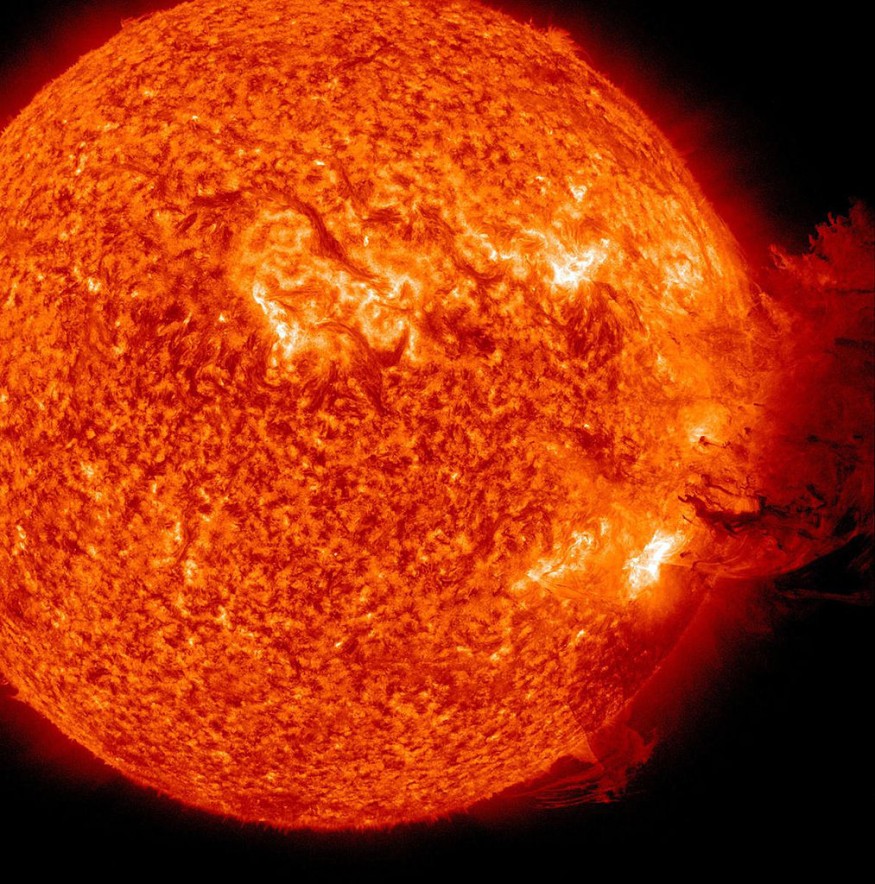A giant sunspot released a colossal solar flare directly towards Earth earlier this week, hitting our planet's magnetic field and causing disruption.
Space weather authorities and multiple reports claimed that the solar flare had a temperature of 10 million degrees Celsius (18 million degrees Fahrenheit).
After brewing for several days, the sunspot four times the size of Earth finally exploded in the late hours of Monday, September 12.
Prior to the solar storm, scientists have been predicting a high chance of flares from the sunspot region called AR3098, which Nature World News also covered previously.
The active sunspot region was gradually becoming more active at that time, which drew attention even to space enthusiasts of looming solar flare threat.
The flare contained highly-energized solar particles deemed as disruptive as always.
In recent weeks and months, our solar system's only star has exhibited signs of increase solar activities, releasing a variety of solar storms such as solar flares, solar winds, and coronal mass ejections (CMEs).
These solar eruptions are accompanied by the said particles in the form of geomagnetic storms, solar radiation storms, and radio blackouts, with reported incidents in Asia, Australia, and Europe in April.
Solar Storm Alert

AR3098 released an M.17 flare on Monday, showing a plasma greater than 10 million Kelvin, with a radio blackout over the Pacific, according to a tweet by solar scientist Dr. C. Alex Young, as cited by Newsweek.
Young reportedly said the solar storm caused temporary disruptive effects over the Pacific Ocean, which coincided with the report of the National Oceanic and Atmospheric Administration (NOAA).
Solar Flare Disruption
On Monday, a 10 centimeter radio burst showed an electromagnetic burst linked to a solar flare traveling at a wavelength greater than the initial 10-cm radio background.
This caused a short-live interference or disruption of radar, global positioning system (GPS), and satellite communications, according to the NOAA's Space Weather Prediction Center (SWPC).
Solar Cycle 25
The Sun is currently in its Solar Cycle 25, an 11-year phase where the sun starts from is solar minimum marked by decreased solar activity, which eventually increases during its solar maximum.
Authorities have projected further solar storms are likely in the coming years, with National Aeronautics and Space Administration (NASA) considering measures to protect our planet's upper atmosphere.
In 2020, both NASA and the NOAA spearheaded and co-sponsored the Solar Cycle Panel 25, which consists of an international group of experts, announced the beginning of Solar Cycle 25 in December 2019 and is expected to last until 2030.
It is during this gathering where the panel predicted that solar events will continue to increase as the star nears its solar maximum in 2025.
During this period, the Blue Planet's living organisms, technology, satellites, and astronauts in space will be impacted, the experts said.
With this, NASA remarked that the mentioned predictions in line with imminent increased solar activities is the reason why we need the Geospace Dynamics Constellation (GDC), a strategic Living With a Star (LWS) mission that aims to understand the dynamics of Earths' upper atmosphere and how it protects our planet.
Related Article : Sunspot Growing at an Exponentially Fast Rate, Should We Worry?
© 2025 NatureWorldNews.com All rights reserved. Do not reproduce without permission.





